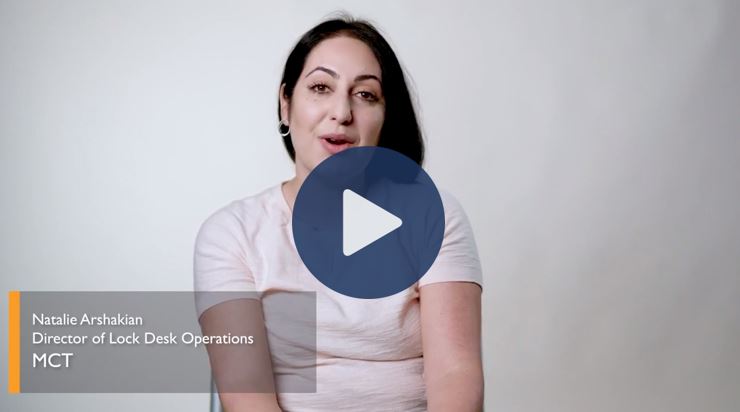This article will prepare you for the inevitable falling rate environment with suggestions on how to employ rate renegotiation policies to guide your lending staff. Further, we will illustrate three example policies to use during a market rally to manage rate renegotiations.
 For rate renegotiation strategies, one would do well to remember the military adage “proper planning prevents poor performance.”
For rate renegotiation strategies, one would do well to remember the military adage “proper planning prevents poor performance.”
When things go south in the stock market, as they inevitably do, you want yourself and your team to be ready to renegotiate with customers desiring a lowered rate.
The best way to mitigate fallout is by being open to renegotiations in a structured way. This is done by providing prior policies that protect the profitability of your company.
Minimizing Rate Renegotiation Costs to the Lender
As renegotiating to a lower rate comes at a cost to the lender, first you want to consider the impact that renegotiation would have on your pipeline and profitability. On one hand, the whole reason you are renegotiating is to mitigate fallout. On the other hand, you want to renegotiate in a way that minimizes the detriment to your profitability.
Renegotiation costs to the lender are based off of two points; execution cost and hedge cost.
- Execution cost – is based off of the current day best execution difference between current rate and float down rate.
- Hedge cost – is based off of market movement from the day the loan was locked until the current day. This would be tied to the specific coupon used to hedge the loan. Based on your policy, this would be the price movement on at least an eighth in rate (0.125%).
The objective is to empower staff to engage in compromising communications with the borrower while also setting boundaries to protect the company.
Increased pull-through percentage? Not only does it help to keep the loan in the pipeline, but it makes the loan extra sticky once you do complete the renegotiation. Make sure to look at pull-through percentages with this production. Loan officers will usually see increased pull-through on the renegotiated segment still in the open pipeline.
A good renegotiation policy should minimize costs as much as possible while still being flexible enough to retain the production.

Renegotiation Policy Considerations – Questions to Ask Yourself
There are several questions you should consider when establishing renegotiation policies for your company. By answering the following questions you will be better equipped to know what your boundaries should be for renegotiation procedure.
Does offering a formal policy increase loan officer requests?
- If a loan officer knows and has a formal policy for renegotiation, then they may be more likely to offer renegotiation to their borrowers. If they don’t have a policy, they may not offer renegotiation.
Does your policy make clear the objective of reducing corporate losses?
- Give your loan officers several options to mitigate losses in the policy so there is flexibility to reduce corporate losses.
Does not offering a formal policy create potential compliance issues?
- Is there a compliance requirement to offer a rate renegotiation? If so, be sure to include those steps in the renegotiation policy so the loan is handled in accordance with those laws and regulations.
- Remember, renegotiation policies should be applied uniformly to ensure all borrowers are treated equally.
Should documentation of borrower initiation be required?
- You may want to make sure it was the borrower who requested the renegotiation. If it was someone else other than the borrower, you may want to know that.
Should a competitive quote be required?
- Consider if you want the customer to be made to go and get a quote from someone else to show that they can do a better rate. This may make the borrower dissatisfied or expose them to be picked up by a competitor.
Does your loan origination system allow you to accurately track and document the number of requested and approved renegotiation requests?
- As part of your policy, you may want to keep track of how many renegotiations you have to measure leakage in your pipeline.
Are there other bartering tools you can give your loan officers for negotiations?
- Keep in mind that there may be other ways to improve the borrower’s situation without lowering the rate. Reach out to your company to learn if there are other benefits you can offer the borrower instead of a lowered rate. For example, you may be able to offer rebates to the borrower that they can use for closing costs.
Now that you’ve answered these discovery questions, you will be well prepared to create a new renegotiation policy or revise an old one.
Elements of a Common Renegotiation Policy
By setting guidelines for each of the bullets below, you will ensure all your bases are covered.
- Limited number allowed per loan – You don’t want to have the lender and borrower renegotiating ad infinitum. Or maybe you do. You decide.
- Market improvement required – By only allowing renegotiation when rates have dropped by a certain amount, you will make sure that no one will lose their head over a insignificant change. Rates would have had to have improved by .25% is a common rule.
- Improved rate to borrower – Sometimes a part of the rate improvement is given to the borrower in the case of renegotiation.
- Renegotiation fee required – Choose whether you want to add any renegotiation fees as a rule.
Below are three sample renegotiation policies that may help inform your own policy creation.
Sample Rate Renegotiation Polices
The following sample rate renegotiation policies are useful for creating or revising a rate renegotiation policy.
Sample # 1 Rate Renegotiation Policy
- Limit one renegotiation per loan.
- Renegotiated rate must result in a minimum of 0.125 improvement in rate to the Borrower.
- The renegotiated base price will be the lesser of:
- Current market 60-day base price, less 0.500%, or
- Original base price at original locked interest rate. The renegotiation price is based on the Rate Sheet, LLPAs, and SRPs that are in effect when the request is received less any prior accumulated extension, relock, or other fees.
- The loan must be delivered by current existing expiration or will be subject to standard extension policy and fees.
- Loan program changes are ineligible without prior Lock Desk review and approval.
- Locks on which the note rate has been changed since the original Lock Date may be ineligible for renegotiation.
Sample # 2 Rate Renegotiation Policy
- One renegotiation maximum per loan.
- Conventional and government fixed rate products only.
- Interest rate must improve by at least .125% to the borrower.
- The original commitment period and expiration date must be maintained.
- Renegotiation price will be current market minus .5%. capped at prior all-in price.
Sample # 3 Rate Renegotiation Policy
- A renegotiation may be exercised only once per loan.
- In an improving rate environment, terms of a Commitment may be renegotiated if the result is a minimum 0.125% improvement in rate to the borrower.
- Price will be calculated at current market, less 0.500% (capped at original price).
- Once a loan has been renegotiated, the rate cannot be raised above the renegotiated rate.
We hope these sample rate renegotiation policies may give you a headstart on creating or revising your own rate renegotiation policy.
When you establish and communicate what you will and will not allow in regards to renegotiation procedure, you will better protect the profitability of the company and make sure those renegotiations do not expose you to additional risk.
We Can Help Create a Renegotiation Policy or Process
Have questions about creating a renegotiation process? MCT is happy to help you establish those guidelines. Contact us to receive a policy recommendation. We have experience working with all types of companies with diverse rate renegotiation policies.
Related Articles



